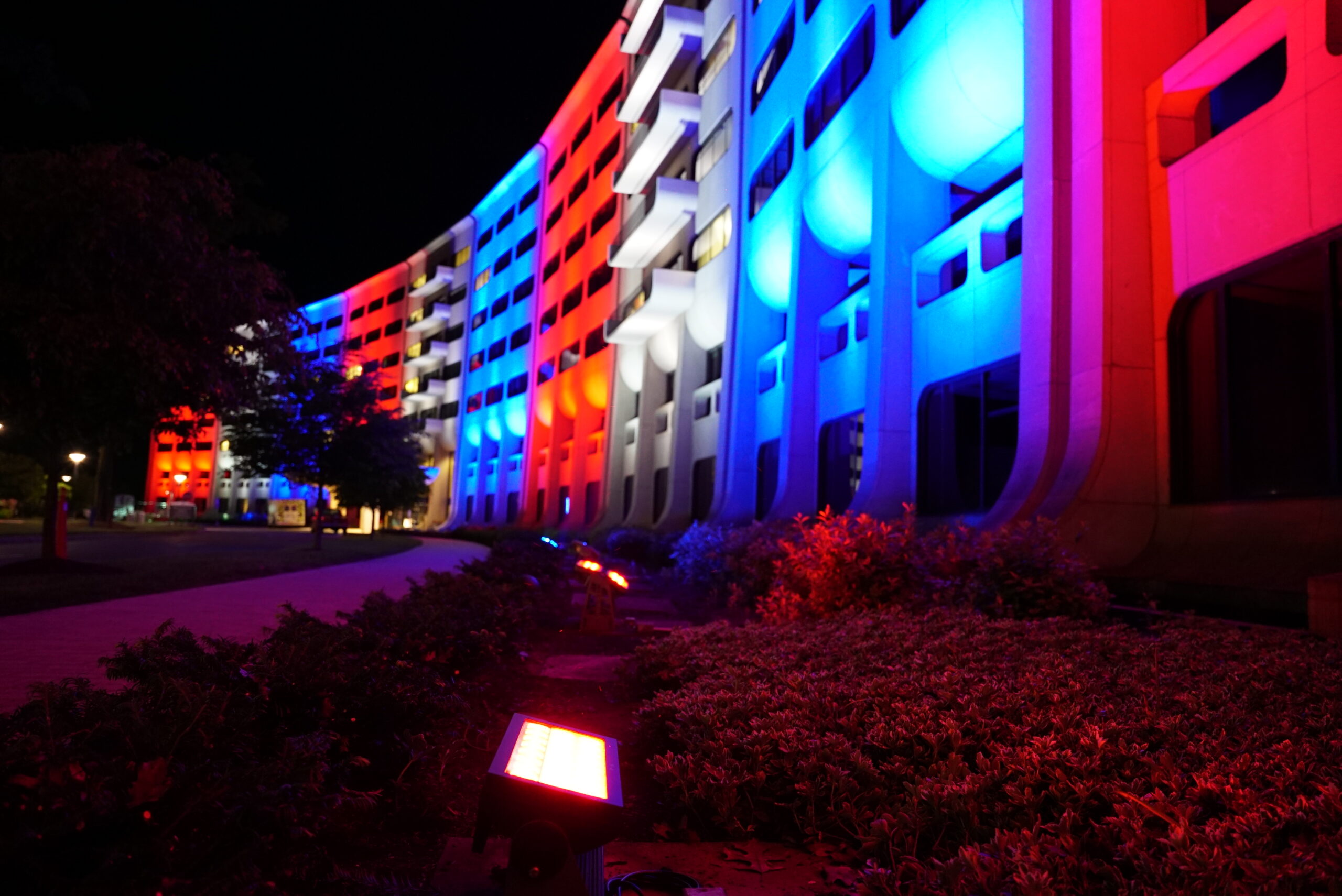

You are surrounded by light every moment of every day. No matter where you are, artificial and natural light has a dramatic impact on your body and mind — even while you’re sleeping. Light is a necessity in every sense of the word, and it’s important to understand that how it’s used determines whether it negatively or positively affects us.
At Illuminated Integration, we love the endless possibilities lighting systems provide. However, we’re also aware that all natural and artificial light must be regulated and adapted to fit the contexts of specific environments so that our minds and bodies can benefit. Let’s look at the relationship between lighting and mood, specifically how bright light, colored light and natural light impact our psychological and physiological systems.
Light and mood — two seemingly separate concepts that actually have a powerful and ongoing relationship with one another. Every light source from the sun’s bright rays to the dimmest glow of an alarm clock produces lightwaves that your body acknowledges and reacts to. There’s no denying the importance of light and the need for its presence. Similarly, there’s no arguing that light has a profound impact on the body and that the presence of disruptive light can be harmful. If lightwaves are present, they’re impacting your mood.
To understand why light impacts our mood, we must understand why it impacts our bodies. The human body operates according to various biological systems, one of which is the circadian system. This system uses lighting cues to regulate other systems in the body and influence processes such as the release of chemicals into the brain. Before artificial light, natural periods of daylight helped regulate our biological clocks. Now that we’re exposed to many forms of artificial light, things have changed. Artificial light impacts our circadian rhythms in many ways, both positively and negatively.
We utilize lighting in our homes at night, gradually increasing or decreasing their light sources as the sun rises and sets. We use brighter lights, or task lighting, when we’re active and accent lights or dim lighting when we’re relaxing. Unfortunately, both bright light and dim lighting can negatively impact our home lives. For instance, bright lighting in dining areas can cause a lack of an appetite, while dim lighting encourages overeating. The most critical aspect of our home life that lighting impacts is our quality of sleep.
Our circadian rhythm system requires periods of darkness to function correctly. Ideally, when night falls, our bodies should be removed from light sources so that our circadian rhythms and other biological systems can perform their vital functions. Unfortunately, any exposure to light during these times disrupts our bodily functions. Although the sun may be down, artificial light is often present in some form or fashion. A bright ceiling light can impact your sleep cycle. So can the light from an alarm clock.
When our sleep and rhythm cycles are disrupted, our health suffers. Why does something as simple as sleeping with a light on dramatically influence our health? For thousands of years, human biology evolved to rely on daily cycles of natural light. Only over the last 150 years have we introduced artificial light into our daily lives. Simply put, artificial light is unnatural for our bodies. Studies show that disrupted circadian cycles harm everything from our internal clock and organs to our body’s basic functioning on a cellular level.
Home isn’t the only place where light can help or hinder our lifestyle. Of course, health complications caused by circadian rhythm disruptions ranging from crankiness to diabetes to cancers will certainly impact an individual’s attendance and mood at work. Sleep and bodily function disruptions aside, lighting affects us in many ways throughout our workday. Specifically, the absence of either adequate natural light or proper artificial lighting can significantly decrease employee performance. If employees are asked to perform tasks in a space that’s poorly lit, productivity can instantly suffer.
Generally speaking, which lighting would you believe is optimal for employee performance in the workplace — bright light or dim light? Poor lighting has been shown to reduce or negatively alter productivity at work. The absence of adequate lighting is detrimental to employee productivity. However, harsh or excessively bright lighting can produce similar adverse effects. It’s not a question of how much light is provided — the intensity, softness, temperature and even color of the light source can dramatically alter productivity in the workplace.
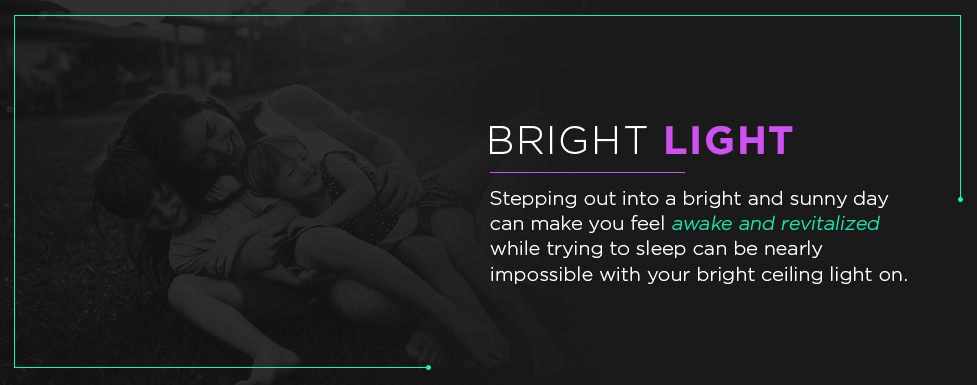
Stepping out into a bright and sunny day can make you feel awake and revitalized while trying to sleep can be nearly impossible with your bright ceiling light on. The intensity of light, regardless if it’s natural or artificial, is a powerful force in our daily lives. Whether at home or at work, we require illuminated spaces to perform our tasks, but how much light is too much light. And what are the psychological effects of lighting that’s too harsh?
One study suggests that emotionality is linked to the brightness of the light. Researchers believe that lighting levels make us perceive heat and make us feel warmer, causing our emotions to become more intense. The “hot emotional system” triggered by increasingly bright light can make us feel more strongly about our opinions and feelings. Bright light impacts both positive and negative emotions. By either increasing light in a dim room or decreasing the harsh intensity of a light that’s too bright, our mood can be regulated more moderately.
Harsh lighting is often more prevalent than dim lighting in the workplace. Fluorescent lighting is an especially poor choice of a lighting source as it can be harsh on employees’ eyes. Because the eyes have a more difficult time focusing under fluorescent bulbs, these lights increase instances of eye strain and migraines. When natural light isn’t available, you can gain the benefits of bright lighting by replacing fluorescent bulbs with LED lighting that illuminates a space adequately while lowering the intensity of the light.
A psychological treatment method known as bright light therapy could potentially help treat individuals with depression. Researchers understand the importance of natural sunlight on human psychology and theorize that bright light exposure may have the same impact on depression as antidepressants. Dawn simulation, a similar form of light therapy, may also be useful for treating seasonal depression. It’s also suggested that controlled and timed bright light exposure therapy during the early morning and late afternoon hours can treat circadian sleep problems.
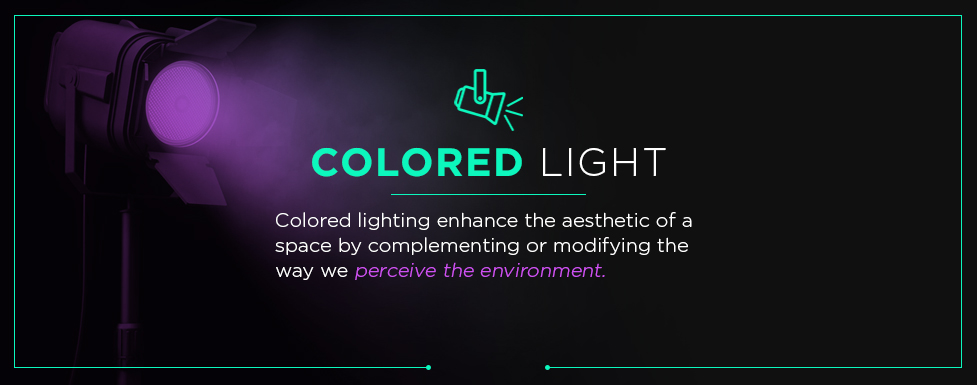
One of the benefits of artificial lighting sources is that we can use them to generate nearly any color of lighting imaginable. This is exceptionally helpful in contexts like school auditoriums, places of worship and entertainment venues that utilize colored lighting for performances. Colored lighting can also enhance the aesthetic of a space by complementing or modifying the way we perceive the environment. Color naturally has an impact on our mood, particularly because of how we choose to interpret these hues.
Color is relatively objective in the sense that most people agree that that grass is green and the ocean is blue. However, we often interpret the meaning of colors subjectively according to our social, cultural and personal beliefs and even our own evolutionary influences. These unique interpretations cause conscious and subconscious emotional reactions in our minds that then influence our mood. The relationship between color and emotion is dramatic. Although each individual has their own perception of color, commonly shared associations include:
While the color of lighting can impact our perception, the temperature of a color can have a substantial influence on our mood. We mentally react to warm and cool colored lighting. Reds, oranges and yellows are considered warm, while blues and greens are considered cool.
When implementing colors into your lighting system, you must be aware of both the color’s hue and its temperature. A harsh orange-colored lighting source or a dim, cooler temperature lighting source may not be appropriate in a corporate office that desires happy, productive employees. In contrast, you’ll benefit from having a range of different colors and temperatures in a performance or worship center as it enables you to acutely set the mood and convey the emotions you want people to feel.
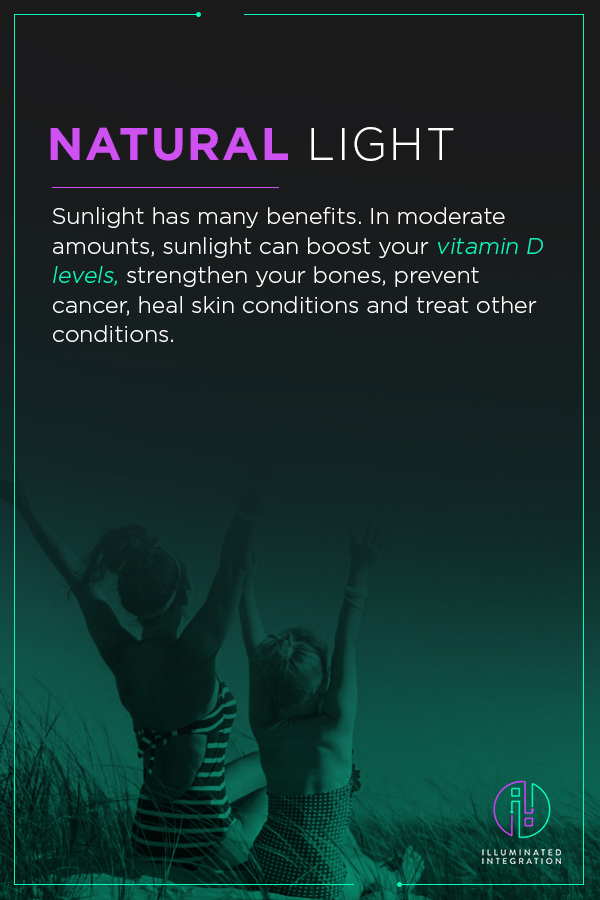
Sunlight has many benefits. In moderate amounts, sunlight can boost your vitamin D levels, strengthen your bones, prevent cancer, heal skin conditions and treat other conditions. It’s no surprise that sunlight also has an impact on our mental health. While the absence of natural light helps our melatonin production and release, natural light triggers our serotonin to release. The reduction of sunlight can be linked to panic attacks and anxiety-related disorders.
Research points to natural light having a profound impact on our mood, particularly our level of happiness. Simply being exposed to natural light regularly throughout the day via an office window may help the body’s circadian rhythms stay in sync, which improves mood and well-being. Increase natural light exposure may also treat symptoms of depression and vitamin D deficiencies. Although natural light alone cannot necessarily cure or wholly treat most ailments, incorporating natural light into a treatment program can help boost feelings of happiness.
Throughout the day, natural light ranges in color temperatures from warm to cool. Cooler temperature lights can make us feel more productive, just as blue light does. Some studies have shown that blue light gives us energy and makes us feel alert, even after exposure to blue light has stopped. Our bodies need warmer natural light as we wind down for the day, which is why blue light exposure can prevent us from getting restful sleep.
The importance of adequate natural light is not lost on employees — it’s one of the most important features they desire in the workplace. The absence of natural light is a growing concern for employees who put a strong focus on wellness. They report feeling gloomy or tired and desire opportunities to engage with the outdoors physically and visually. Natural light integrated into the workplace results in a reduction in employee eyestrain, headaches and drowsiness.
Bright light, colored light and natural light all have a unique impact on our bodily functions, perception and mood. Knowing how to maximize the natural light in a space while integrating the right amount of artificial lighting systems can be challenging. Let the industry professionals at Illuminated Integration help you design a lighting system that retains your natural light while integrating a versatile artificial lighting system that’s built for your unique needs.
Light can be a versatile resource when applied properly. Unfortunately, light can also be a source of disruption if used incorrectly in certain contexts. The presence of even a minimal amount of light dramatically impacts our physiological and psychological systems. Understanding the relationship between lighting and mood is critical if you want to enhance the mood, health and productivity of those working, living or relaxing in your space.
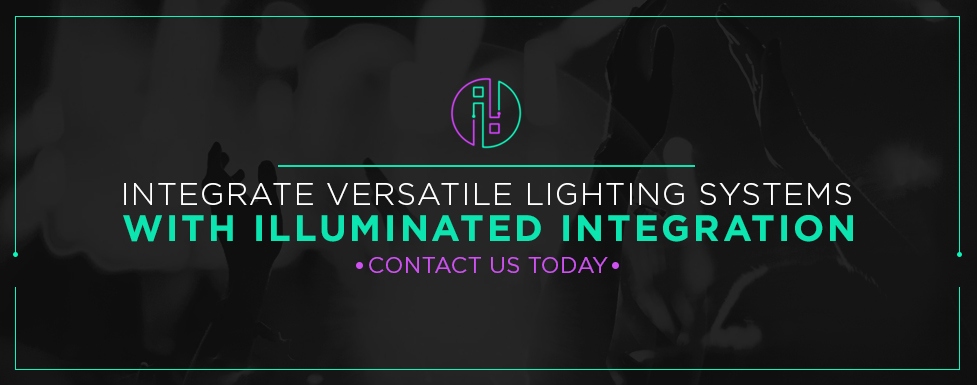
Provide the perfect amount of lighting every time of the day and night with a customized lighting system designed by Illuminated Integration. Our team of experienced designers will help you achieve the correct intensity, color, softness, direction, texture, coverage and movement of light in your unique space. These versatile lighting systems will even let you manipulate each lighting source individually so you can continuously control its impact on those within your environment. Contact us today to learn more about our dynamic, immersive, integrated lighting systems.